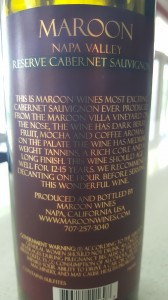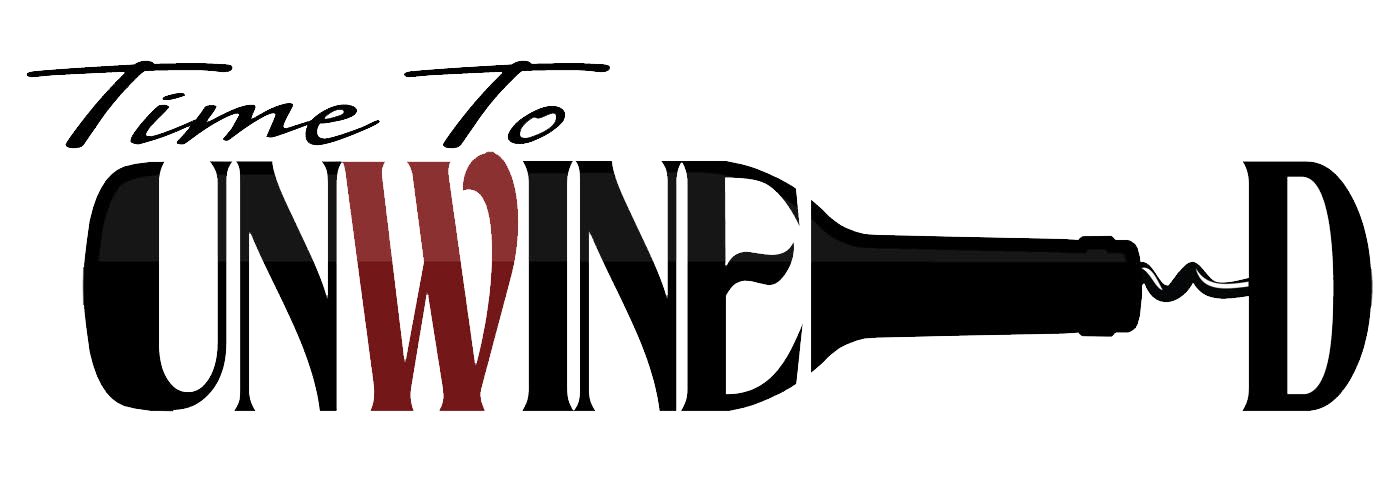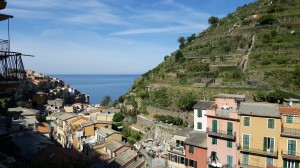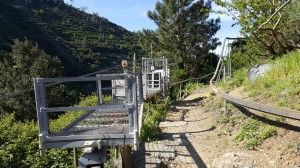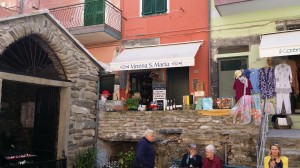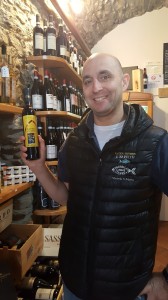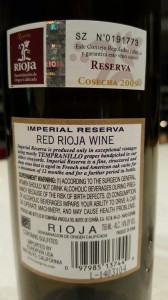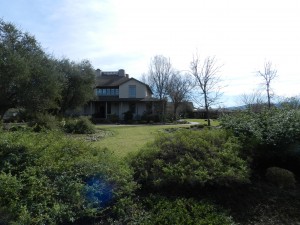 My husband and I recently returned from another adventure in Napa and Sonoma. Our goal was to visit wineries we’d never hit before, and for the most part that’s what we did. There’s one winery, however, that we couldn’t drive by without stopping, and that’s Frog’s Leap.
My husband and I recently returned from another adventure in Napa and Sonoma. Our goal was to visit wineries we’d never hit before, and for the most part that’s what we did. There’s one winery, however, that we couldn’t drive by without stopping, and that’s Frog’s Leap.
“Why?” you ask! Well, there are a few reasons.
Firstly, it’s just so darned beautiful there.
Secondly, the tasting is very special. When the weather is nice, tastings are held outside when possible. The tasting includes yummy local cheeses, crackers, and some jams made from fruit grown on the property.
Thirdly, and most importantly, the wines are WONDERFUL!!!
As we arrived for our tasting, we drove alongside beautiful vineyards of dormant vines surrounded by the beautiful mustard know in the region at this time of the year. The historic Red Barn, which was originally built as the Adamson Winery back in 1884, welcomes the winery visitors on the drive in. Today, this “ghost winery” not only inspires their wine tasting guests, but also Frog’s Leap’s winemakers John Williams and Paula Moschetti.
 John Williams (a former diary farmer from upstate New York, NOT the music composer famous for film scores with the same name!) moved to Northern California in 1975 to study Enology and Viticulture at UC Davis. After working at Glenora Wine Cellars in the Finger Lakes region of New York, and Stag’s Leap Wine Cellars and Spring Mountain Vineyard in Napa, he started Frog’s Leap Winery in 1981. It is located along Mill Creek in a spot known as the Frog Farm. Frogs were raised here around the turn of the century, providing the very appropriate name!
John Williams (a former diary farmer from upstate New York, NOT the music composer famous for film scores with the same name!) moved to Northern California in 1975 to study Enology and Viticulture at UC Davis. After working at Glenora Wine Cellars in the Finger Lakes region of New York, and Stag’s Leap Wine Cellars and Spring Mountain Vineyard in Napa, he started Frog’s Leap Winery in 1981. It is located along Mill Creek in a spot known as the Frog Farm. Frogs were raised here around the turn of the century, providing the very appropriate name!
Here are some of the wines we tasted on the lovely wrap-around porch of The Vineyard House overlooking the vineyards: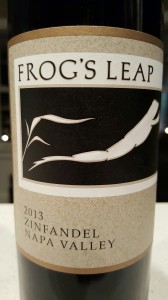
2014 Napa Valley Chardonnay – A lovely Chardonnay with great acidity, the green apple and Meyer lemon flavors are balanced beautifully with the floral aromas and the toasty element from eight months of sur lie aging.
2013 Napa Valley Zinfandel – One of my favorite wines of the tasting, this Zinfandel is what a Zinfandel is SUPPOSED TO BE! It has a beautiful transparent color, not one of those deep purple colors that shouldn’t represent Zin at all! A field blend of 77% Zinfandel, 22% Petite Sirah and 1% Carignan, the aromas and flavors include brambly fruit, licorice, some Southern Rhone type garrigue and has a nice long finish.
2013 Rutherford Merlot – One of my favorite Merlots of the New World, Frog’s Leap always knows how to do this varietal right. With ripe plum and cherry flavors, this wine has soft tannins and isn’t too big! It’s what a Merlot should be; elegant and nicely balanced. (82% Merlot, 17% Cabernet Sauvignon, 1% Cabernet Franc)
2013 Rutherford Estate Cabernet Sauvignon – This lovely Cab has black cherry, blackberry and cassis, along with the dusty earth of the Rutherford soil. This needs some time, but it’s going to be wonderful! (89% Cabernet Sauvignon, 8% Cabernet Franc, 3% Merlot)
 The thing that probably impresses me the most about Frog’s Leap Winery is that they truly care about our planet. Frog’s Leap produces some wonderful wines, while keeping the planet healthy through the production of solar and geothermal power. In 2005 they built their Vineyard House according to the goals of the U.S. Green Building Council. They even insulated it using old blue jeans. Talk about recycling!!!
The thing that probably impresses me the most about Frog’s Leap Winery is that they truly care about our planet. Frog’s Leap produces some wonderful wines, while keeping the planet healthy through the production of solar and geothermal power. In 2005 they built their Vineyard House according to the goals of the U.S. Green Building Council. They even insulated it using old blue jeans. Talk about recycling!!!
Health of the vineyard is achieved though organic farming and the use of biodynamic methods. Along the rows of vines are borders of specially selected plants, which attract butterflies and beneficial insects.
So if you want tasty wine, made true to the varietals and green conscious to boot, pick up some wines from Frog’s Leap Winery. Or if you’re heading to Napa, pay them a visit.
Here’s a link to their very fun site: http://www.frogsleap.com/
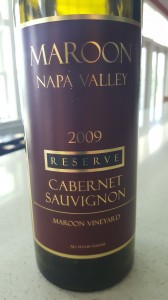 My husband and I cracked open a bottle of Napa Cabernet the other night and after the first sniff and taste we both exclaimed “WOW!!!!”
My husband and I cracked open a bottle of Napa Cabernet the other night and after the first sniff and taste we both exclaimed “WOW!!!!”